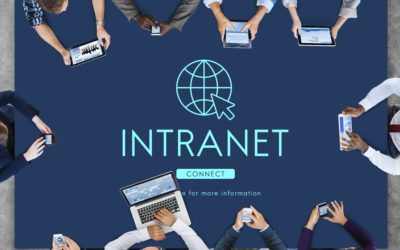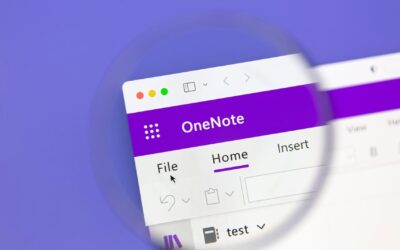Your IT systems are like a jigsaw puzzle with many pieces.
Moving your IT support services to another technology provider can get complicated. It doesn’t have to be an ordeal. Nonetheless, the transition to a new managed service provider (MSP) is affected by several considerations and conditions.
Every situation is different, so I’ll only mention a few here:
- Are you making a lateral move from one larger provider to another larger provider? Or switching from a break-fix, mom-and-pop outfit in another state to a boutique MSP in Atlanta?
- Maybe you’re moving from in-house IT to an outsourced solution.
- Is your decision to make a switch motivated by concrete business problems you’ve had with IT providers in general and your most recent IT services experience in particular?
- Do you anticipate making any changes to the proverbial puzzle?
The purpose of this blog is to highlight six factors that influence the cost of onboarding so you can better determine whether Integris’s process will add value to your mission.
1 – Quality Control
To guarantee quality control, Integris onboards a maximum of two clients per month.
As a privately-held boutique, our modus operandi is to do more with fewer clients with long-term plans to stay independent (and not be acquired).
More strategy. More documentation. More cybersecurity and compliance. More digital transformation. More hand-holding.
2 – Dedicated Onboarding Project
Every Integris client gets a dedicated onboarding specialist. Moving your services is a significant project that requires an individual with big picture thinking and the ability to capture minute details.
The role also demands leadership and inspiration to keep the ball rolling. Projects can go off track for several reasons unless an energetic and empathetic cheerleader is present to hit reset and diplomatically corral clients who may be distracted.
3 – Meetings, Site Visits, and Interviews
The transition necessitates the collection of strategic, technological, physical, cultural, environmental data, and more.
The project is a top-down endeavor starting with an executive kick-off meeting and several site visits and interviews.
In many ways, it’s similar to a medical exam. New problems and causal factors frequently appear. So do business processes, assets, and contracts (that are still in force).
New information creates additional workflows, discovery, and resolution activities.
4 – Comprehensive Transition
Let’s assume you’re not happy with the way your IT systems function. Over time, this situation, along with your current provider’s inability to get everything to work, is probably why you’re making a move.
Your new provider, Integris, or someone else (if you’re not making a lateral move and changing nothing) is likely to recommend system reconfigurations.
Inspired by the pursuit of building a better IT process, these proposed changes to your IT architecture may involve replacing services currently under contract.
This is where your transition team effectuates a work-around without missing a beat transitioning everything else with your existing vendors.
So you avoid paying the penalty for early termination of an agreement, and the services get supplanted at a later date, with no disruption to your team.
All told, Integris juggles, documents, and incorporates 102 different data points to make sure no service move details are overlooked.
Learn More: Onboarding Deeper Dive
5 – User Orientation
Partnering with a new IT services provider should not take your team by surprise. It’s also nice to understand your organization’s rationale for selecting a different MSP.
Integris never cuts any corners when it comes to making sure every one of our clients knows the four different ways to engage with technical support and the business problems we are trying to solve with our approach.
Learn More: Client-Focused Functional Structure
Conducted online or onsite (depending on your office/employee footprint), a senior member of our account management team will unveil a comprehensive introduction to our support platform.
6 – Time Invested
Integris never recommends knife-edge service cutovers. Unless there’s an emergency forcing our hand (happens sometimes), a complete onboarding consumes sixty to 120 hours and spans sixty to ninety days.
Why so long? While your IT support begins on the effective date of your Master Services Agreement (thirty days after signature as a general rule), the following factors are often relevant:
- You may elect to have your current MSP contract overlap with ours to ensure a smooth handoff.
- These services may run parallel for an extra two to four weeks.
- Your team may not be available for User Orientation before the effective date of service activation.
- We’re conservative when estimating the time it takes to get fully acclimated with the pulse of your business. And we don’t close the onboarding ticket until we mend all loose ends.
What’s Next?
Some IT providers don’t charge an onboarding fee. In all candor, I’m not sure how they can afford to do this unless they don’t actually do this.
It sounds way too good to be true. Buyer beware. A haphazard IT onboarding sets a negative tone that is hard to overcome if not impossible.
At Integris, we believe anything worth doing is worth doing well, especially with the growing embrace of IT as a revenue driver rather than a cost center.
The pandemic of 2020 ignited a work from home revolution with the most significant gains accrued by organizations ready for the pivot. The commercial office market will never be the same. The handcuffs are broken!
Learn More: IT Drives Business Value
Are you ready for what the future holds? An exceptional IT service transition (with all pieces of the puzzle fully assembled) is undoubtedly a significant first step.
The Integris team has decades of experience, and we look forward to answering all of your onboarding questions.



